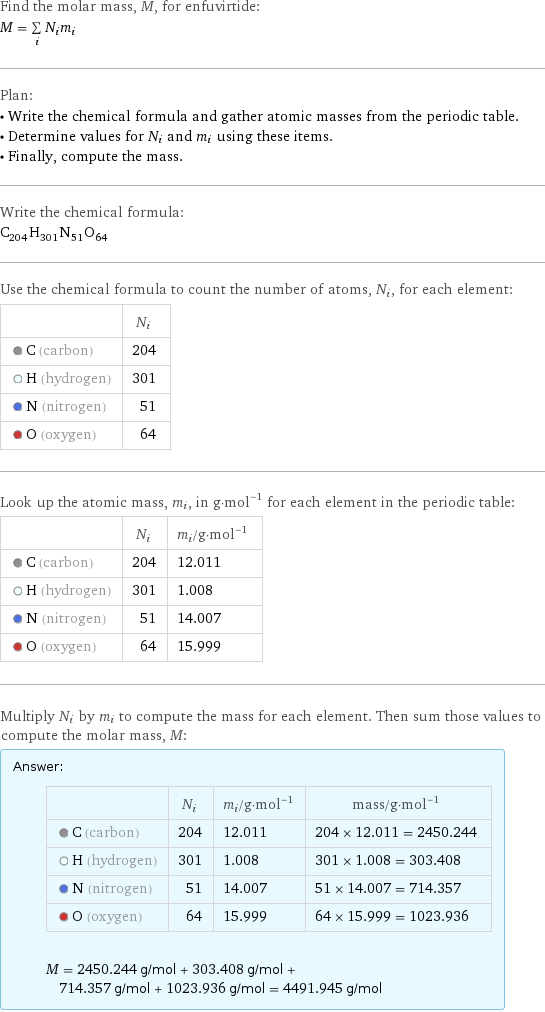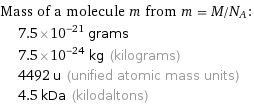Input interpretation

enfuvirtide | molar mass
Result

Find the molar mass, M, for enfuvirtide: M = sum _iN_im_i Plan: • Write the chemical formula and gather atomic masses from the periodic table. • Determine values for N_i and m_i using these items. • Finally, compute the mass. Write the chemical formula: C_204H_301N_51O_64 Use the chemical formula to count the number of atoms, N_i, for each element: | N_i C (carbon) | 204 H (hydrogen) | 301 N (nitrogen) | 51 O (oxygen) | 64 Look up the atomic mass, m_i, in g·mol^(-1) for each element in the periodic table: | N_i | m_i/g·mol^(-1) C (carbon) | 204 | 12.011 H (hydrogen) | 301 | 1.008 N (nitrogen) | 51 | 14.007 O (oxygen) | 64 | 15.999 Multiply N_i by m_i to compute the mass for each element. Then sum those values to compute the molar mass, M: Answer: | | | N_i | m_i/g·mol^(-1) | mass/g·mol^(-1) C (carbon) | 204 | 12.011 | 204 × 12.011 = 2450.244 H (hydrogen) | 301 | 1.008 | 301 × 1.008 = 303.408 N (nitrogen) | 51 | 14.007 | 51 × 14.007 = 714.357 O (oxygen) | 64 | 15.999 | 64 × 15.999 = 1023.936 M = 2450.244 g/mol + 303.408 g/mol + 714.357 g/mol + 1023.936 g/mol = 4491.945 g/mol
Unit conversion

4.4919 kg/mol (kilograms per mole)
Comparisons

≈ 6.2 × molar mass of fullerene ( ≈ 721 g/mol )

≈ 23 × molar mass of caffeine ( ≈ 194 g/mol )

≈ 77 × molar mass of sodium chloride ( ≈ 58 g/mol )
Corresponding quantities

Mass of a molecule m from m = M/N_A: | 7.5×10^-21 grams | 7.5×10^-24 kg (kilograms) | 4492 u (unified atomic mass units) | 4.5 kDa (kilodaltons)

Relative molecular mass M_r from M_r = M_u/M: | 4492